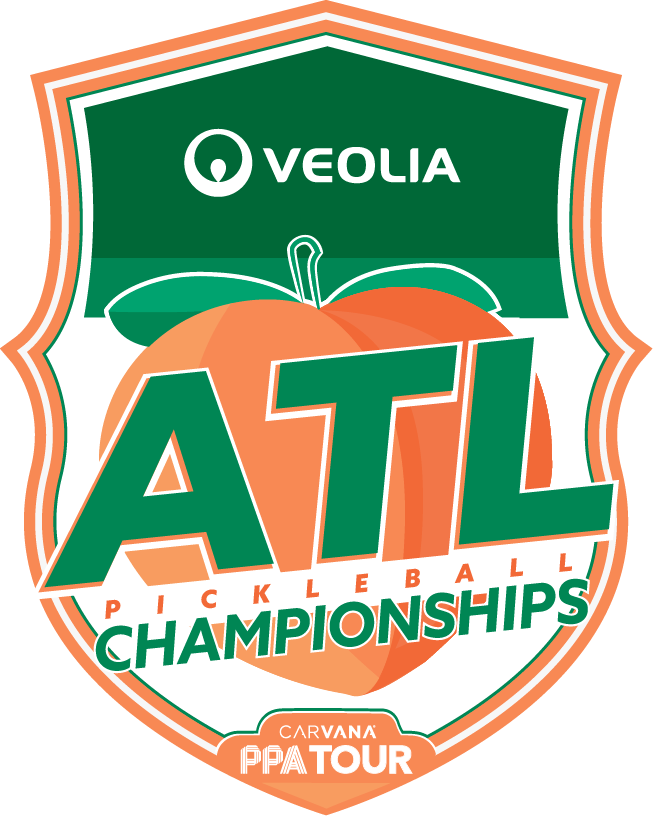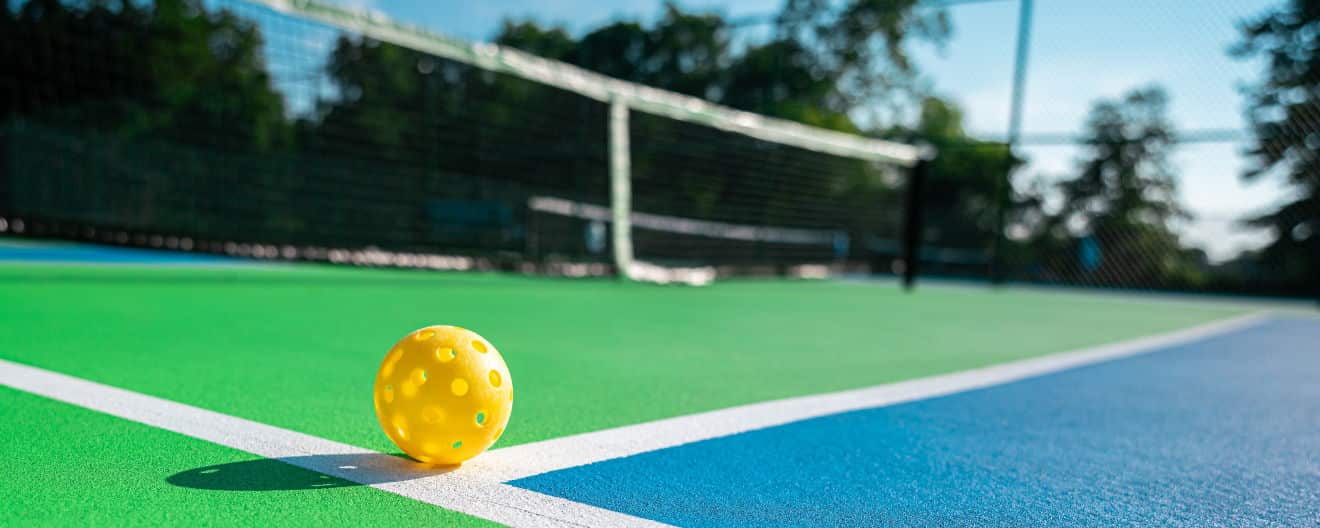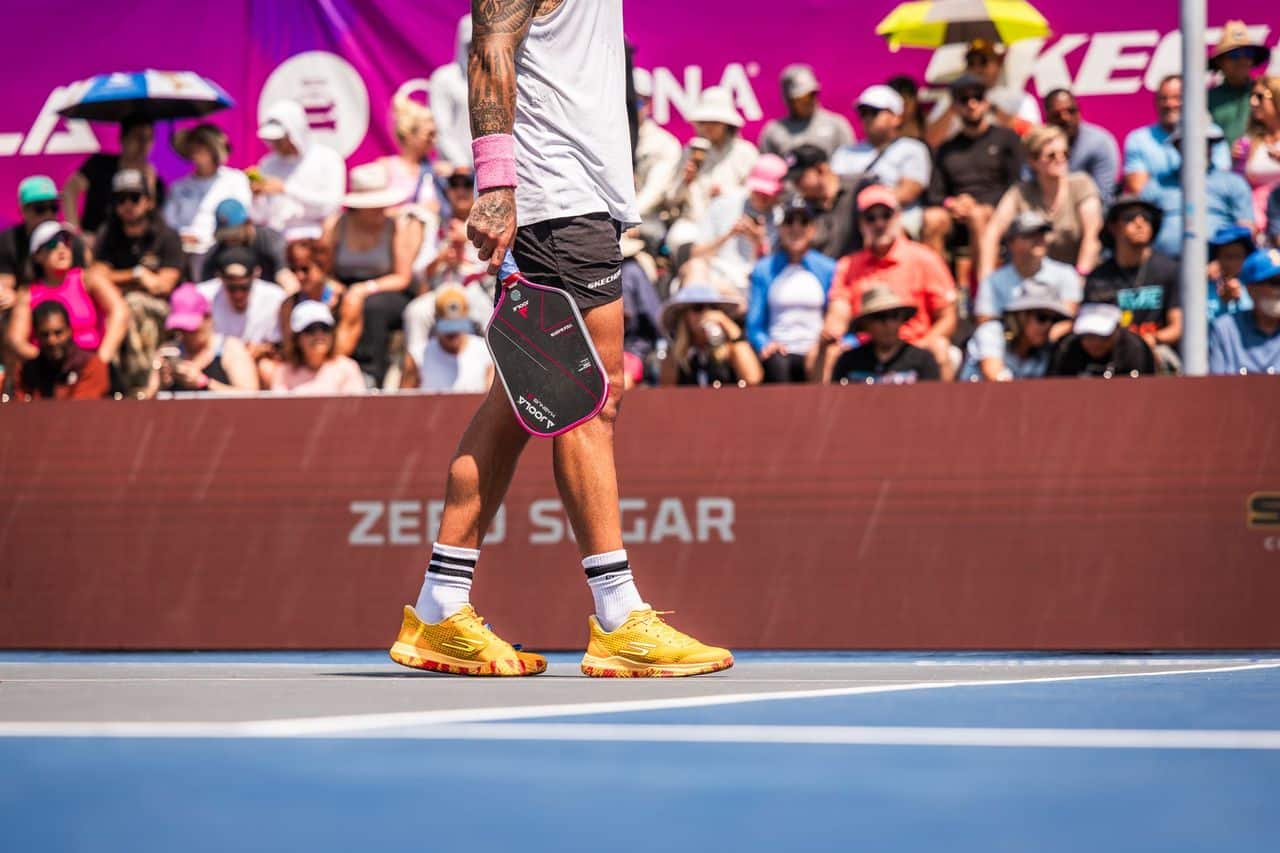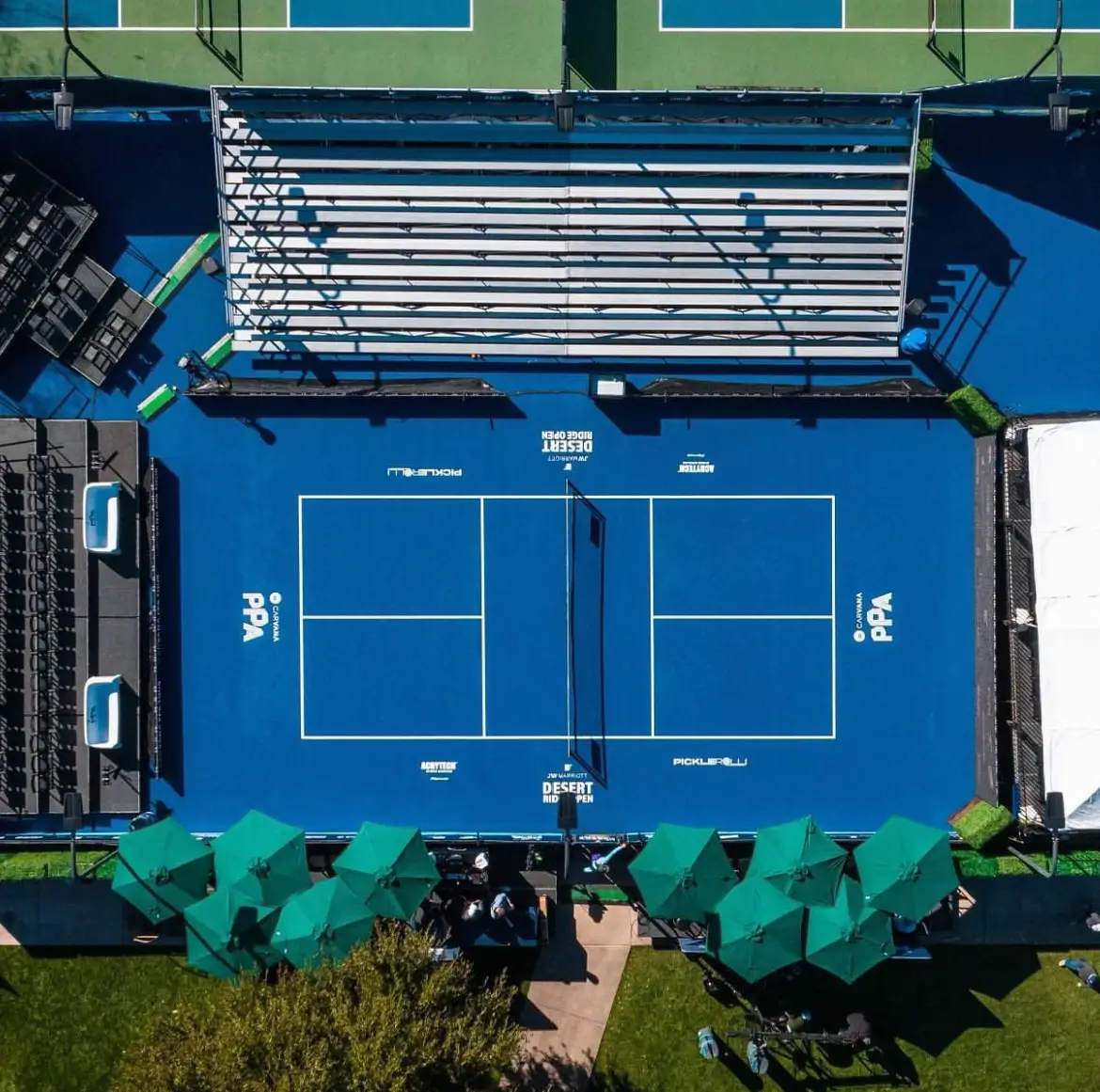Pickleball Serving Rules
| April 12, 2024
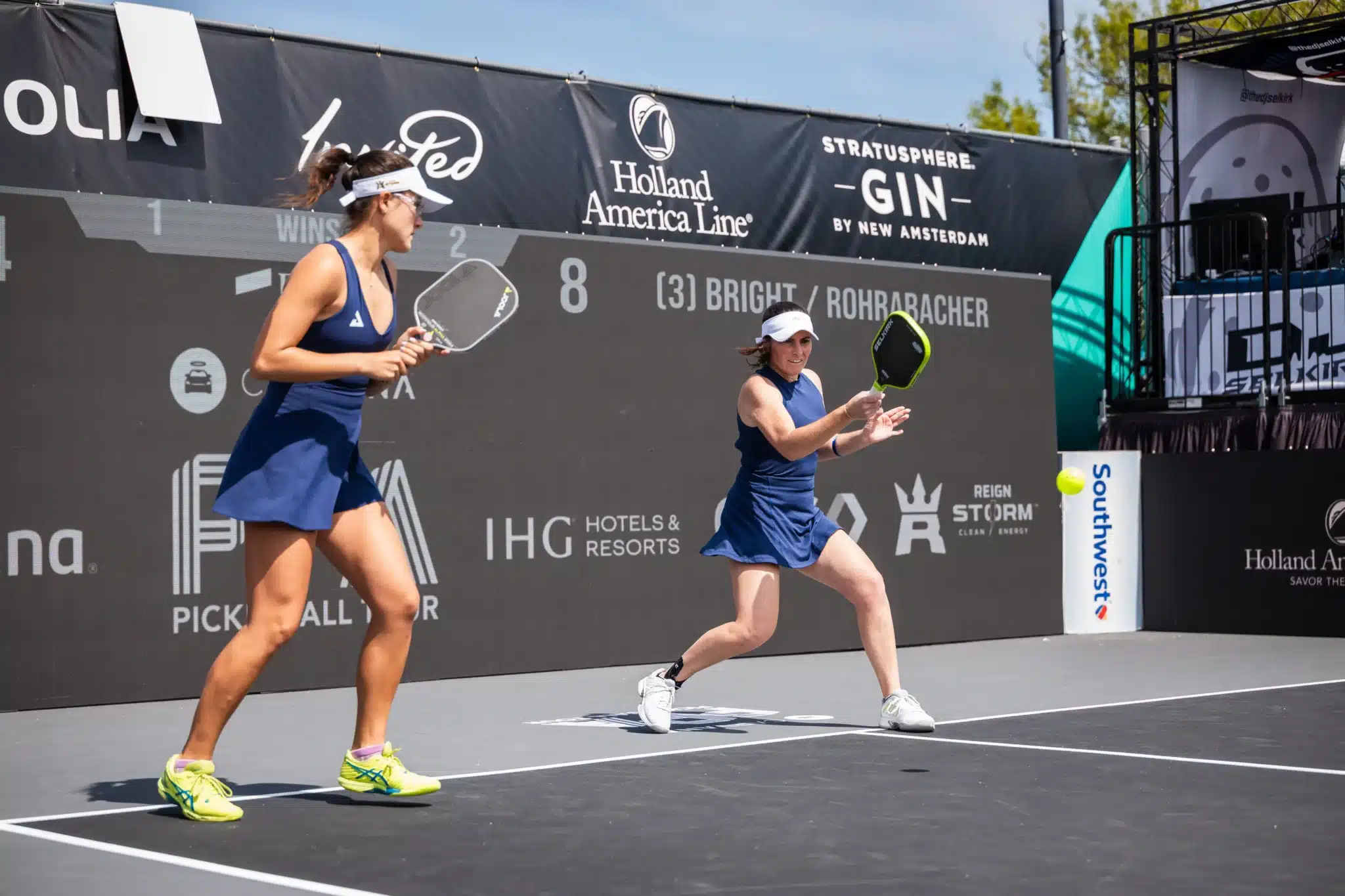
Knowing the rules for any sport is important if you are interested in getting the most enjoyment possible.
And while, at first, pickleball rules may seem daunting, it’s fairly simple. And learning the serving rules are necessary to begin any game.
(After learning more about pickleball serving rules, check out our article on how to play pickleball)
Types of serves
There are two different, and legal, types of serves in pickleball. Any player can use either type during a game and you are not restricted to using the same one for the entirety of the game. One can choose to use either type on consecutive serves or just stick to one for the game or match.
Drop serve
The “drop” serve is when the paddle strikes the ball after the ball has hit the ground. The “drop” serve was added as a rule in 2022. It is considered easier to master for beginners because it has fewer rules. However, plenty of advanced players also use a “drop” serve.
The rules for the “drop” serve are easy to learn.
As long as your feet are in the legal position, with at least one foot on the ground behind the end line, you can drop the ball any way you wish but it must be dropped from an open palm. You cannot propel the ball down, nor can you project the ball upward. The ball can be held as high or as low as you like so long as your hand does not add force to the ball. In addition, the ball can bounce as many times as you like before the paddle strikes it. There are no restrictions on where the ball can bounce as long as the feet are in the legal position.
With the “drop” serve, the ball can be struck in any way the server deems appropriate. There are no restrictions on where the ball needs to be when it strikes the ball.
Volley Serve
The volley serve is the more-traditional serve in pickleball. There are several rules to hitting a successful volley serve. The volley serve is when the paddle strikes the ball before the ball hits the ground.
- The serve must be made with either an underhand or backhand motion with the arm of the server moving upward when the ball is struck. The ball cannot be struck from above or from the side.
- The paddle must make contact with the ball below the waist.
- The paddle head must be below the highest part of your wrist when the ball is struck. The entire paddle must be below the serving hand when the ball is struck.
There are a few advantages to each serve and a few disadvantages, too.
The “drop” serve has less restrictions, and is easier to use to get the ball in. Spin is fairly easy to use here if the server is able to manipulate the paddle. Its downside is that it’s more difficult to power because a pickleball generally does not bounce very high when dropped.
The volley serve requires more precision because of the rules but the upside is the amount of power that can be added to the serve because a ball can be struck in any manner as long as the server follows the rules.
Making sure you follow the rules
Regardless of which serve you use there are a few other things to consider for your serve to be legal. The serve must land in the diagonally opposite service area and must clear the entirety of the non-volley zone. A serve that lines on the line of the NVZ is a fault.
Your feet must be correctly placed behind the baseline. As long as no part of your body is touching the line or in front of the line, you are considered to be in a legal position. Also your feet must be inside the imaginary extension of the sideline and the centerline.
Only one serve attempt is allowed per server. If the server faults, there is no second serve.
Strategy for the serve
It is considered wise to serve the ball deeper on the court as it will affect the time the receiver has to move forward toward the non-volley zone. A deep serve doesn’t mean fast or slow or high or low. A good, deep serve is effective, no matter how it gets accomplished.
A deep serve often results in a more shallow return and will give you more choices for a third shot. A good, deep serve allows for options in upcoming shots for the rest of the rally.
Scoring and sequence
At the start of the game, the serving team is determined by a coin toss or other means. After the first serve, each player takes turns until a fault is committed.
Traditional scoring, or side-out scoring means the only time a team can score a point is when that team is serving.
Before the serve, the score is always called. It is the responsibility of the server to announce the score. It serves two purposes – to let the other team know the rally is getting ready to start and to also let everyone know what the serve is so it can be corrected if it was announced in error.
The player on the right side of the court always serves first in the game, or after a side-out in the doubles game. In singles pickleball, the server serves from the right if his or her score is zero or even (0, 2, 4, 6, 8, 10, etc.) and from the left if his or her score is odd (1, 3, 5, 7, 9, etc.).
The server continues to serve until he or she commits a fault. After a fault, the opposing team gains the serve and their score remains unchanged. (For more information on scoring, check out our scoring guide article)
Serving faults
If the server commits any of the following, it is a fault and the rally is over.
- Failing to strike the ball in the correct service court.
- Serving into the net or into the non-volley zone on the opponent’s side of the court.
- Serving out of bounds, either long or wide.
- Stepping over the baseline before making contact with the ball
- Failing to make an underhand serve or having the wrist above the navel on a volley serve
- Applying force to the ball, either upward or downward on a “drop” serve.
Know the rules
Remember to understand the rules of the serve. There may be slight variations where you play, what kind of tournament it is and what type of scoring that is used.

